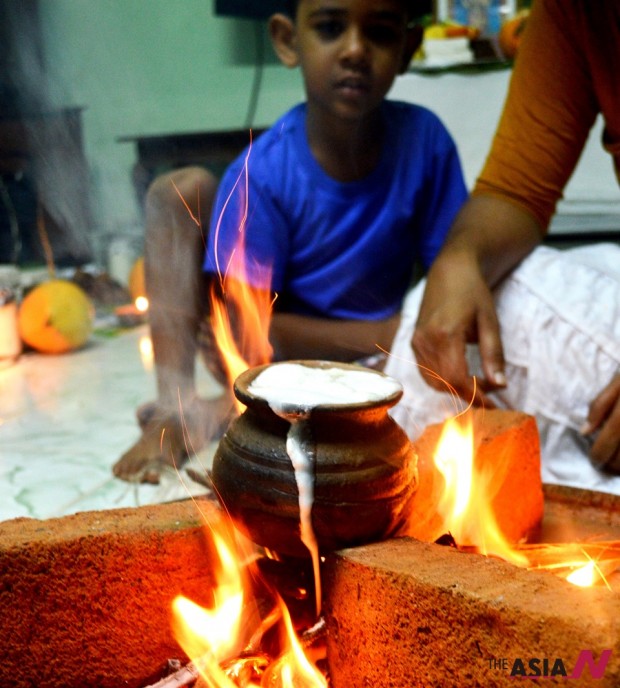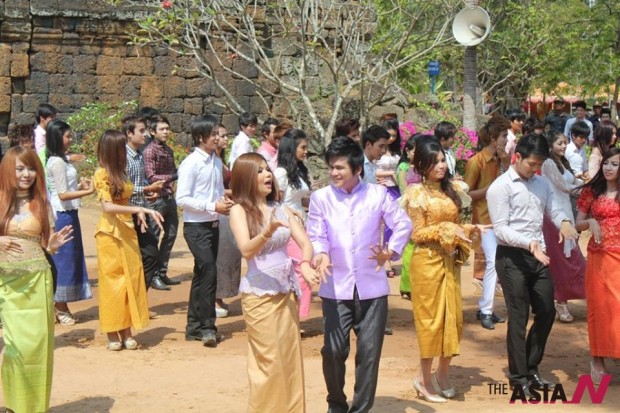[Transnational] “Spring New Year” in Asia
The Beauty, Sweat and Joy of Cambodia’s Khmer New Year
Vannak Va·Cambodia·Dream Together Master, SNU
April is both the hottest and happiest month of the year for Cambodian people who have long celebrated their Khmer new year in this month. The 3-day festival usually starts on the 13th or 14th of April depending on the lunar calendar. However, people are in the mood for dancing, partying and playing games the whole season.
A week before New Year’s Day, you will notice the whole city of Phnom Penh, which is infamous for traffic jams, slowly empty of vehicles. During this week, thousands of people leave for their homeland until the city is almost deserted. Most businesses are closed for at least 3 days to a full week. So it is smart for city dwellers and tourists to stock up on food and drink before the holiday as most restaurants will be closed.
Glittering light decorations and offering tables full of food and fruits can be seen in many houses. These tables are prepared the day before the New Year, when the house is clean and decorated to welcome the beautiful New Year Angel to whom they pray for good luck, health and wealth.
The first day of the festival is a time to celebrate the New Year with relatives and friends. Most radio and local television stations broadcast the same New Year Program showing the previous year’s Angel passing down its duty of protecting the people to the New Year’s Angel.
When the arrival of the New Year Angel gets close, people start counting down. But, instead of greeting the year with toasts of beer and champagne, Cambodian people light candles, burn incense sticks, and make wishes to welcome the Angel.
Traditionally, on day one, people always go to a pagoda to offer food and drinks to the monks. Day two is the gratitude or gift giving day. Young people give their parents or grandparents new clothes, food and money. Giving alms to the poor is also considered thoughtful. Day three is the bathing day. People can choose to pour water over a Buddhist statue or give their parents a bath to show their respect.
People still celebrate the Khmer New Year like they did in the past. However, these days, there is more entertainment. Folk games like tug-of-war, tree branch snatching, chasing the baby kit, throwing and so on are commonly played by a pagoda, in the park or in public places where curious tourists or expats are welcomed to join and have fun. Popular music and dance can be heard and seen everywhere both in the city and rural provinces. In many folk songs, country people meet their spouses on the dance floor and end up getting married after the Khmer New Year festival. What a happy ending!

Boiled milk spilling from sides of a pot, symbolizing prosperity (Photo : Sanika Sulochani Ramanayake)
Wishes for prosperity, happiness and longevity
Chandana Shrinath Wijetunga·Sri Lanka·PhD candidate of Environmental Studies, SNU
The melodious call of the cuckoo bird, thundering sounds of fire crackers and rhythmic beats of “rabana” (a type of traditional drum) creates an atmosphere that takes away the sorrow, depression and bad omens of every Sri Lankan during the month of April each year. In the month of Bak in the Buddhist calendar, when the sun moves from Meena Rashiya (House of Pisces) to Mesha Rashiya (House of Aries) in the celestial sphere, people of Sri Lanka begin celebrating the Sinhala New Year on the 13th or 14th of April every year. Even though Sri Lankans, who live abroad like myself, miss this festive atmosphere, we never forget to celebrate Aluth Avurudu in our respective ways. Kandyan period rulers shifted the festival to April to fall in line with the Tamil New Year called Pudu Varsham. Now the celebration is called the Sinhala-Tamil New Year. Various beliefs, many associated with harvest, created diverse rituals, customs, and ceremonies connected with the New Year celebration. Youngsters and adults alike prepare in advance for Aluth Avurudu to make sure it as a grand celebration.
Before the New Year Festival, astrologers work out auspicious times to perform the rituals in order to bring about prosperity and happiness to the people and the country. The majority of the people, being farmers, celebrate the occasion in the form of thanksgiving after the major harvest “Maha.” Farmers’ New Year wishes are mainly focused on having proper seasonal rain, minimum damages from wild animals and fertile crops in the coming year. However, the whole celebration is focused on concepts such as paying gratitude, prosperity of the nation, happiness of the family and tolerance among each other. The custom of offering betel to parents and elders demonstrate the act of paying gratitude.
During the New Year celebration, women begin their work at home by facing the correct direction and lighting the hearth to prepare the traditional “Kiribath”(milk rice). In the process, milk is boiled in a newly earthen pot and the milk spills over from all sides of the pot. It symbolizes prosperity of individual dwelling as well as of the whole nation.
As a child I remember eating all kinds of sweets as well as different types of plantains. Similar to the Korean Lunar New Year, every age group has different kinds of traditional games to enjoy during the Sinhala and Tamil New Year Festival. The majority of the games focus on building team spirit and unity as a family, neighborhood and nation. I believe Aluth Avurudu is embedded with every good omen and prosperity is not far behind anyone who celebrates it and understands its true meaning. I wish everyone a healthy, prosperous and long life… Ayubowan!





























































